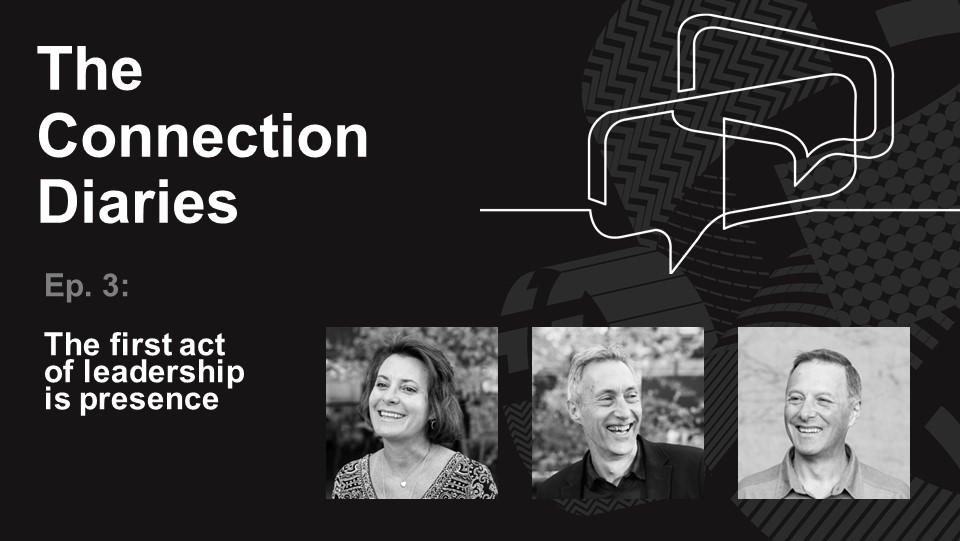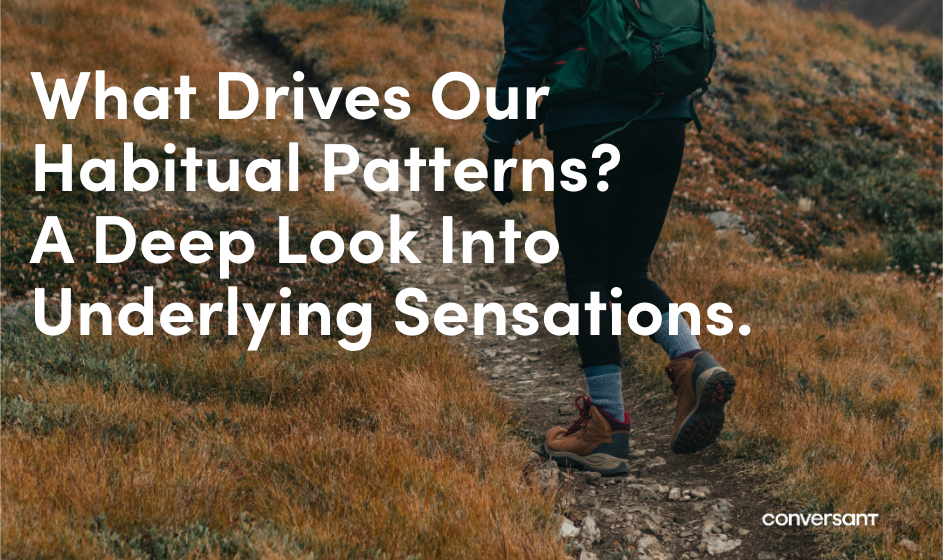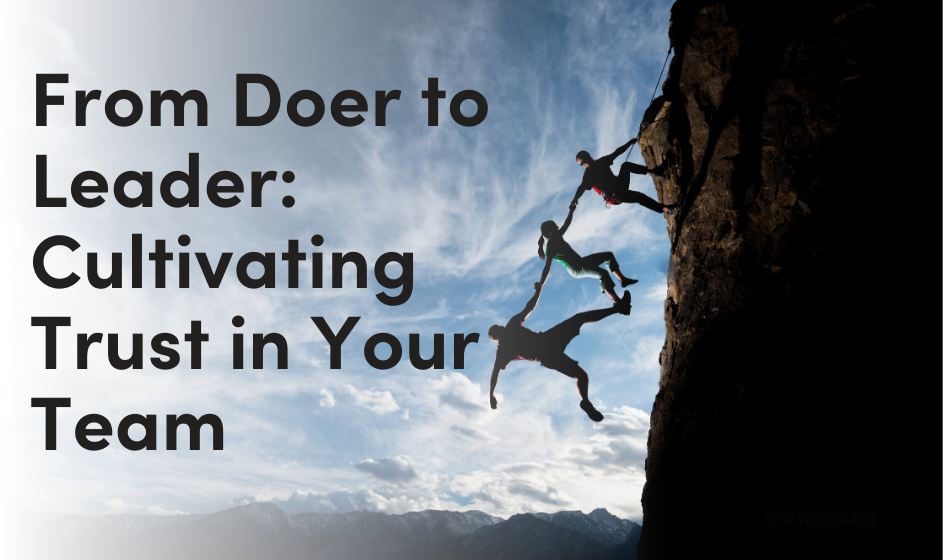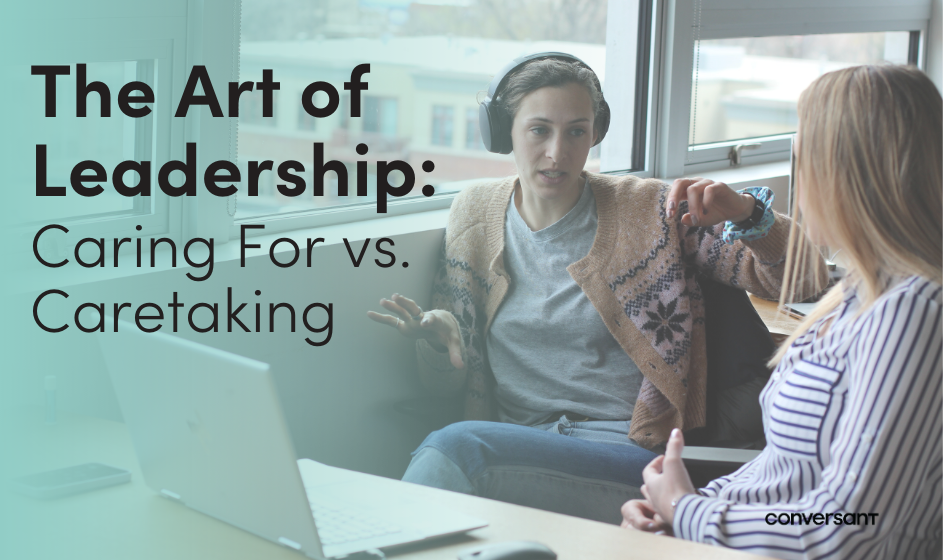Presence, which we define as awareness without prejudice, sounds simple but in today’s world of constant distractions and high-speed action it can prove to be one of the most challenging aspects of leadership. In our current COVID-19 environment, where we can’t physically be present and uncertainty and fear are pervasive, practicing purposeful presence is even more critical.
We think of presence as the triad of our cognitive, emotional, and physical experience. All three are connected and playing out in our lives. In leadership, presence means noticing where we’re starting from in each of these spheres as we go to lead.
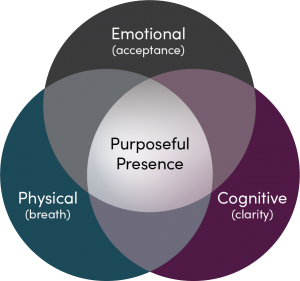
When we connect first with ourselves, we are more available to be with what is present for others. We also have more choice in how we react and make decisions, giving us an opportunity to shift from emotions like fear and anxiety back to our individual and collective purpose.
Right now we’re not just dealing with the virus – we’re also facing a virus of fear. It’s important for leaders to be honest, to put people in connection with the truth of what’s happening, and then create a response that is more purposeful and proactive.
Making these shifts can be challenging. Here are just a few practical things we think can help:
- Presence Practice: Emotional awareness – Name it! This tool walks you through an emotional scan where you practice naming and being present with your experience in a given situation. When we do this, we are in the position to compare and choose emotion, which is vital to emotional agility.
- In the video above, Roger Henderson walks us through a simple breathing practice that you can use to engage your parasympathetic nervous system allowing us to experience our fear and anxiety while opening us up for purposeful action.
We will host a longer conversation next week on the value of being purposefully present as a leader along with some more tools and techniques for how to practice it. We will also soon be offering an opportunity for us to practice presence together virtually, so stay tuned via our newsletter.
Full Transcript
Robin: Hello, this is another edition of the Connection Diaries, and the thing that’s been on my mind is coming out of a weekend where the news cycle is so rapid and there’s so much information that we’re constantly being bombarded with about COVID-19, and about the economy, about people’s both physical, emotional, and financial health in these times. And so I’m curious, Richard, what do you think is key for leaders when there is sort of so much swirl happening in the world? How do leaders really stand out within their organizations at times like this?
Richard: Well Robin, that’s such a great and timely question. I noticed that I have quick flip answers, but I think this really requires a thoughtful response. And, you know, we like to say that the first act of leadership is to be present, and although we can’t physically be present with people, we can still have presence when we are with people. And I know Roger has been talking a lot about the three dimensions of presence. And Roger, maybe you could just say something about when we talk about presence the three ways we would look at that, or that we do look at that.
Roger: Yeah, so we think of presence as the triad of cognitive, emotional, and physical, that all three of these are connected and playing out in our lives, and when we think of leadership in that context, it’s really noticing where we’re starting from is we go to lead. And so, what is happening with us cognitively, emotionally, and physically? Knowing that, connecting with that before we step in and working with others.
Richard: I think, Roger, you know, the important point there for me when you say that is that if I’m not connected first with myself I’m gonna miss a lot of things with other people. For example, if I’m feeling anxious and I haven’t managed to engage with my anxiety, I most probably won’t want to deal with someone who’s anxious because it’s gonna make me feel uncomfortable. So as a leader, I’m gonna actually miss the opportunity to really hear and listen to what someone is feeling and thinking, which we know is the most effective way to begin to make a shift. So I don’t know, Robin, what thoughts you might have on that, in your experience.
Robin: Well, I just love that commentary because one of the things I know that I’ve seen in leaders and in myself, right, is this ability to step over an emotion and actually make poor decisions when we do that, right? And so, one of the things we know is that our collective decision-making power actually relies on us being clear about where are we emotionally, because if I am anxious I’m actually making decisions from a place of anxiety, right? And I can’t imagine in today’s times like this that’s going to play out very well for us in our organizations.
Richard: I was just gonna say, I do think part of, you know, we’re not only having the virus itself we having the virus of fear. And so, what you’re saying is so important as a leader is to be honest, is to put people in connection with the truth—what’s actually happening—and then create a response that actually is more purposeful and reactive.
Robin: Beautiful.
Roger: We have a tool that we sometimes recommend, and we think right now it could be really important, and it’s called an emotion scan. It’s a one sheet piece of paper that has different families of emotions and in that is fear, one of the big ones we’re talking about now, but others are included as well. And the idea is to sit down with that and actually draw it out, “what am I feeling?” Look at that menu of different things and be able to name it. And the importance of naming it really is, to what you’re both saying, is it gives us more choices. Once we’ve noticed that we’re frightful, perhaps now I can say, “Okay do I actually want to lead from that or not? Can I perhaps lead with compassion or openness instead of my own fear?”
Robin: And Roger, you’ve also been doing some practice—some physical practice—with us around how to make that shift emotionally, right, because just saying I want to make the shift can be really hard. Will you share here sort of what some of the techniques, or just one of them, that we’ve found to be helpful?
Roger: Sure, the—this is when we’ve been using a lot in the last week. I know I’ve been doing it online in these calls, but we’ve also been doing it on our own, and it’s a very short, brief sitting and breathing practice. So what I do is I find my seat, my feet square on the ground, upright, shoulders back and down. And I invite myself—or when it’s others—to actually breathe, and it’s a process where we inhale for four counts and outhale for six. So it might go something like this: in for four… out for six… Do one more… in for four and out for six.
Doing that three or four times, a few times a day, what we really notice—and you may have noticed it just right there, and I did—is it kicked in my parasympathetic nervous system, and I had a little bit of a relaxation response. So I’m actually feeling my fear and trying to shrink it just a bit.
Richard: Thank you
Robin: Thank you. Well thanks everybody for joining us. Richard, Roger, thanks for your time today. We are gonna host a longer conversation on both the value of being purposely present as a leader, and also just some really additional really practical techniques for how to do that, and Richard and Roger are gonna have an exciting offer here in the next couple of days to have us actually come together and practice together virtually over the next few weeks so be on the lookout for that. Thanks, everybody.

